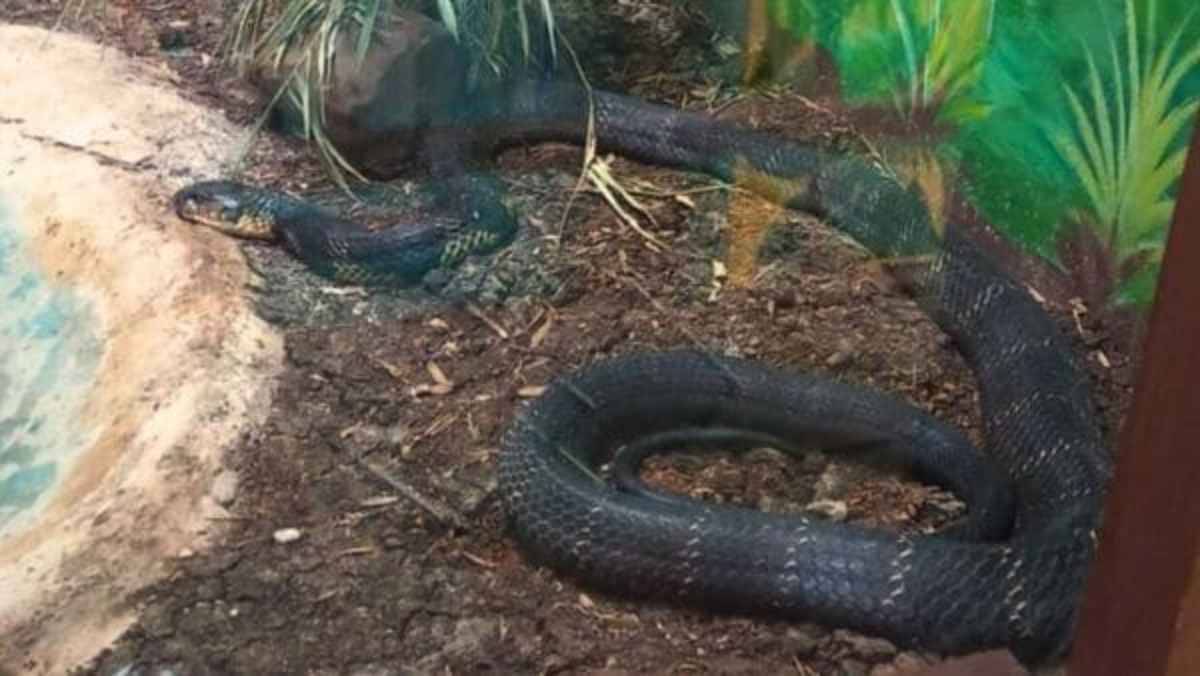The king cobra, the world’s longest venomous snake, is back in the spotlight following the death of a specimen at Bhopal’s Van Vihar Zoo. This incident has reignited talks about King Cobra Reintroduction of the iconic species to Madhya Pradesh. Chief Minister Mohan Yadav has expressed intent to curb snakebite-related fatalities through such measures. However, experts warn that the plan, while well-meaning, is fraught with scientific, ecological, and logistical challenges.
King Cobra Reintroduction: Understanding Its Natural Habitat
Scientifically known as Ophiophagus hannah, the king cobra can grow up to 15 feet and is known for its preference for humid, densely vegetated environments with access to water. In India, its natural distribution spans the Western Ghats, parts of Northeast India, and select regions of the Eastern Ghats. Recent sightings in Chhattisgarh have sparked speculation about possible extensions into Madhya Pradesh, though these remain unverified.
Has the King Cobra Ever Called Madhya Pradesh Home?
Despite hopeful reports, there is no solid historical evidence of king cobras inhabiting Madhya Pradesh. The region’s dry deciduous forests lack the dense canopy and moisture levels needed to support this apex predator. Experts point out that isolated sightings should not be misinterpreted as proof of an existing or viable population.
The Taxonomy Twist: Not One, But Many
Groundbreaking genetic research has revealed that what was once considered a single species is actually composed of four distinct lineages. Notably, the king cobra population in the Western Ghats is now recognized as a separate species, Ophiophagus kaalinga. This revelation holds serious implications for reintroduction, as species-specific ecological needs must be respected.
The Risk of Genetic Hybridisation
One of the major concerns surrounding the reintroduction plan is hybridisation. Translocating king cobras from the Western Ghats into central India could result in genetic mixing, threatening the purity and survival of both local and introduced populations. Conservationists stress that any reintroduction must prioritise genetic integrity to avoid undermining broader conservation goals.
Snake Census: Ambitious But Impractical
The Chief Minister has also proposed conducting a state-wide snake census. However, herpetologists argue that no standard methodology exists for accurately surveying elusive and often nocturnal snake species in the wild. Without a solid scientific framework, such efforts may offer little actionable insight.
Breeding Complexities and Population Viability
King cobras are unique among snakes—they build nests and guard their eggs, a rare trait in the reptile world. Yet, they struggle to breed in captivity, raising doubts about the success of any artificial breeding programme. Establishing a self-sustaining population in Madhya Pradesh could take decades, and their tendency to avoid human settlements limits their role in controlling other snake populations.
What the Experts Say
Many wildlife experts and herpetologists are skeptical of the reintroduction initiative. The plan to source individuals from Karnataka ignores crucial ecological distinctions and lacks comprehensive scientific backing. Experts argue that more research, habitat assessment, and public awareness are needed before such a sensitive and high-stakes programme can be safely pursued.



